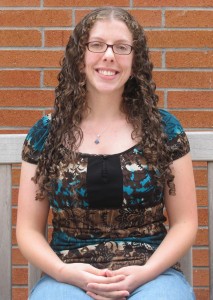Aubrey Erwin received her Bachelor of Science degree in Environmental Studies with a minor in Literature from Albertson College in Idaho. As a student, Aubrey worked with the campus environmental organization TERRA (The Environmental Resource & Recreation Association), where she worked across organizations and social groups to education and advocate for sustainability. After attaining her Bachelor’s degree, Aubrey served with the Idaho Food Bank as an AmeriCorps Vista member. During her first year of AmeriCorps, Aubrey worked as a Summer Feeding Associate that included a wide away of program implementation and coordination related responsibilities. Now with RARE AmeriCorps – Resource Assistance for Rural Environments, Aubrey hopes to contribute as many of her strengths as possible to the betterment of the community she serves. Following her year with the RARE Program, Aubrey plans to study urban & regional planning at the graduate level.
Aubrey is placed with Sandy Main Street. In September 2008, the City of Sandy was selected to participate in the Clackamas County Main Street Program, in conjunction with the Oregon Main Street Program. Currently, Sandy Main Street is participating in the Oregon Main Street Program at the “Transforming Downtown” level. As such, Sandy Main Street is committed to downtown revitalization using the Main Street Four-Point Approach, and is working incrementally to implement the program.
With Sandy Main Street, Aubrey will coordinate and manage an array of activities leading to further development of the downtown area, including filling vacant stores, recruiting businesses, counseling property owners, and developing and expanding existing events. Specifically, Aubrey will spend the majority of her time developing processes, procedures and methods for helping new businesses locate in Sandy. Additionally, Aubrey will work with Main Street’s Promotion Committee on a local restaurant promotion plan, plan and execute a visioning process for downtown Sandy, and help manage the organization’s master database of properties, businesses, vacancies, etc.
Organization: Sandy Main Street
Community: Sandy, Oregon
Population: 9,774
County: Clackamas



